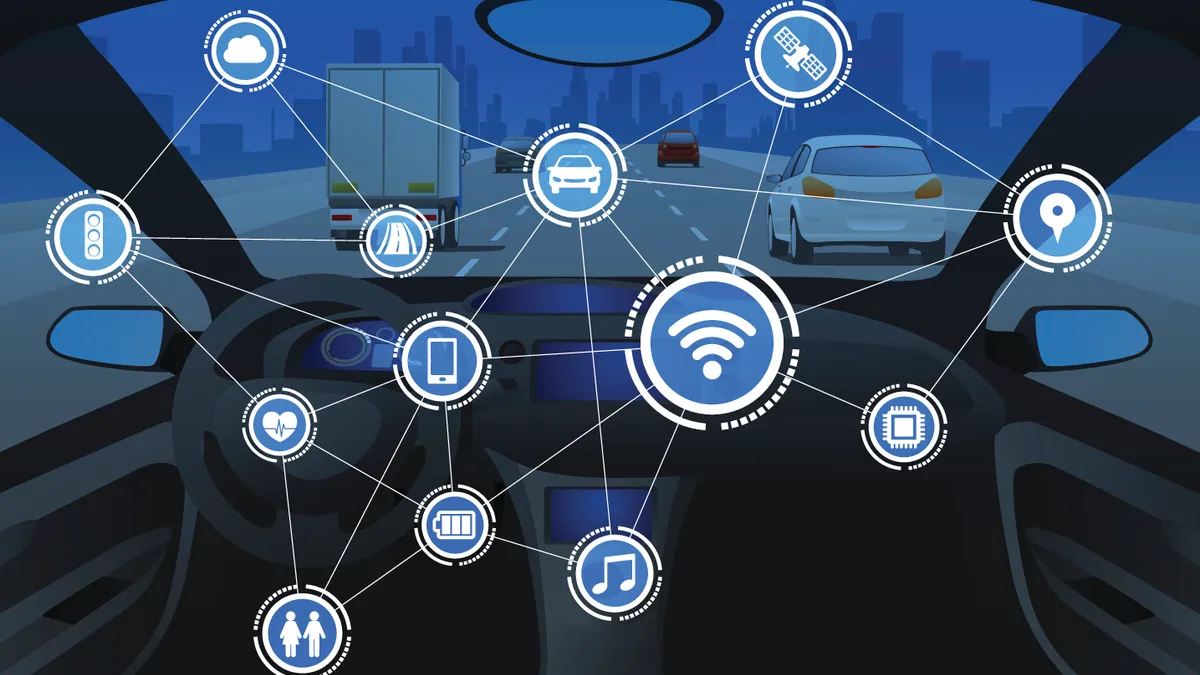Dive Brief:
- Automakers Audi, Ford and Jaguar Land Rover North America, nine equipment suppliers and the Virginia and Utah state transportation departments can use previously-reserved spectrum for connected vehicle applications, according to an April 24 decision from the Federal Communications Commission.
- Connected vehicle industry leaders had expected the FCC to approve the 14-member group’s waiver request, which allows the deployment of cellular vehicle-to-everything, or C-V2X, technology.
- “The approval of this waiver is the first step to fully utilizing this lifesaving innovation and news we have long been waiting to hear,” said Laura Chace, president and CEO of the Intelligent Transportation Society of America, in an email statement.
Dive Insight:
The ability for vehicles to communicate with each other and with infrastructure such as traffic lights, stop signs and sensors is seen as an important facet of fully autonomous vehicles that can make roads safer. But the wireless spectrum the technology needs has been mired in controversy since 2020, when — over the objections of the U.S. Department of Transportation — the FCC reallocated the spectrum that had been reserved for V2X.
“It has been a rocky road for the deployment of connected vehicle technology in the United States with regulatory uncertainty perhaps the biggest hurdle of all,” said Chris Armstrong, vice president at Panasonic Smart Mobility, in an email statement.
Last year, Panasonic and Samsung subsidiary Harman joined the three automakers, two transportation departments and others to file the joint waiver request with the FCC, noting in a letter that “C-V2X is developing on multiple fronts across the globe, and the United States should act promptly to keep pace.”
The FCC stated in its decision “that granting the Joint Waiver Request serves the public interest by encouraging the widespread deployment of [intelligent transportation systems] operations using V2X technology.”
Chace urged the FTA to quickly approve other outstanding waiver requests and “to build on this momentum and establish final rules” to govern and protect V2X services.












